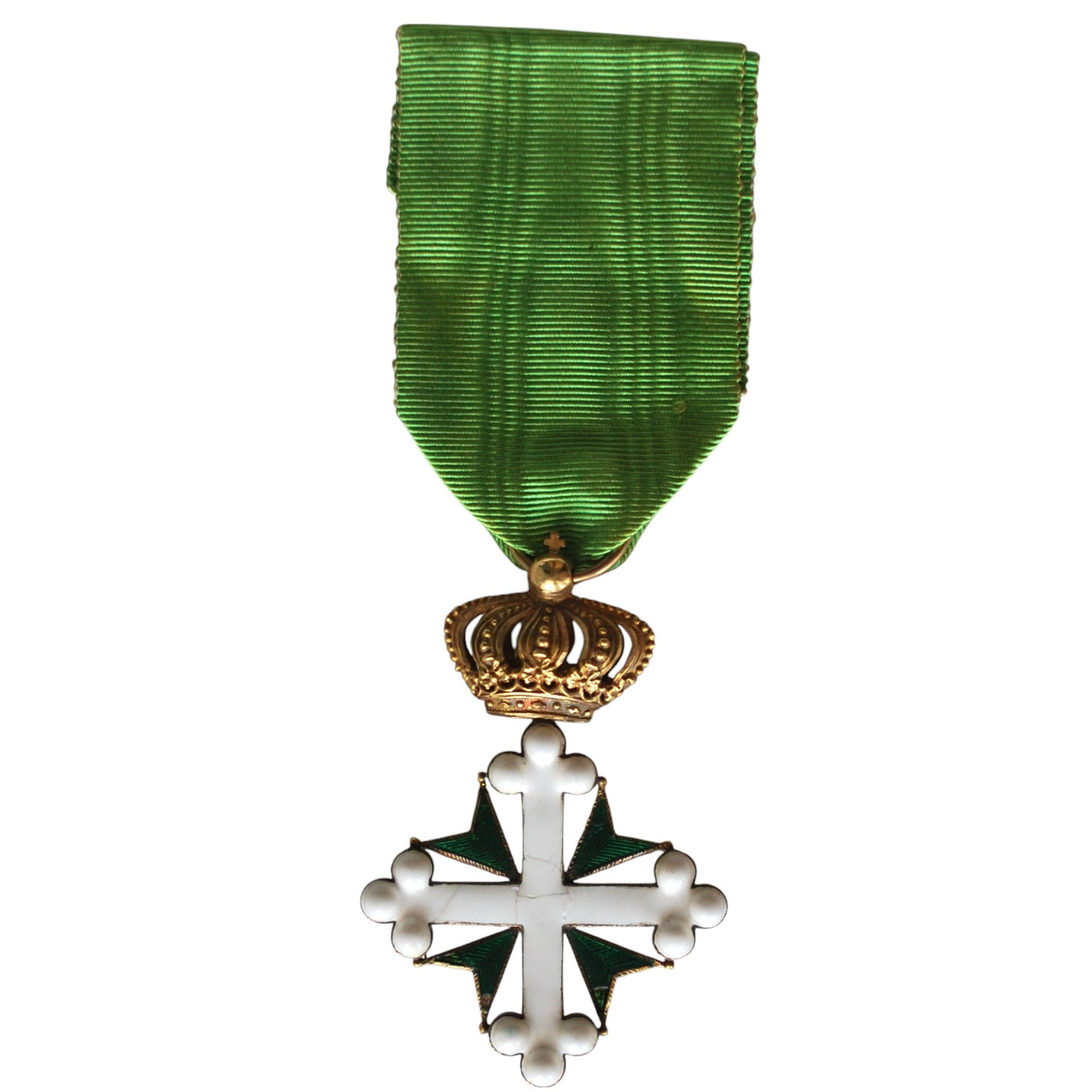The Italian Order of Saints Maurice and Lazarus, Knight Officer's Cross, is a distinguished decoration from one of Italy's oldest orders of chivalry. This cross reflects the order’s long-standing tradition of recognizing meritorious service, particularly in military, cultural, and charitable fields, and its strong ties to the House of Savoy.
Key Features:
- Name: Italian Order of Saints Maurice and Lazarus, Knight Officer's Cross.
- Original Name: Ordine dei Santi Maurizio e Lazzaro.
- Period: Likely dates to the period of the Italian monarchy (pre-1946).
- Dimensions: 60.42 x 39.99 mm, a proportionate size for an Officer's cross.
Design Details:
Obverse:
- Shape: A Maltese cross with four arms, characteristic of the order.
- Enamel: The arms are enameled in white, signifying purity and dedication.
- Crown: The cross is surmounted by a royal crown, indicating its high rank and association with the monarchy.
Ribbon:
- The Officer's cross is traditionally worn suspended from a green silk ribbon. If original, the ribbon enhances the medal’s authenticity and value.
Historical Context:
- Foundation: The order was established in 1816 by King Vittorio Emanuele I of Sardinia, uniting the Order of Saint Maurice (founded in 1434) and the Order of Saint Lazarus (founded in the 12th century).
- Purpose:
- Awarded to individuals for outstanding service to the Kingdom of Italy, particularly in the areas of military excellence, charitable efforts, and cultural contributions.
- Recipients were predominantly Catholic, both Italian and foreign.
- Post-1946 Era:
- Following the abolition of the monarchy, the Italian Republic ceased recognition of the order. However, it continued as a dynastic order of the House of Savoy.
Condition and Collectibility:
Condition:
- Damaged enamel. Please refer to the photos to assess the condition of the enamel.
The Italian Order of Saints Maurice and Lazarus, Knight Officer's Cross, is a significant and elegant artifact that reflects the legacy of the House of Savoy and the Kingdom of Italy. Its well-proportioned design, historical importance, and rarity as an Officer’s decoration make it a valuable addition to any collection of Italian or European orders and medals.

